During lockdown, electronic music displayed its emotional empathy with isolation and solitary working.
But as during The Cold War in its breakthrough years, it read the room again with the onset of worldwide and domestic conflicts, both armed and political.
There were times in 2022 that were as if The Cold War had never ended and in amongst the turmoil, artists reflected their anxieties on top of those already existing.
Jori Hulkkonen of SIN COS TAN said: “Overall, this decade has been a real downer with the pandemic and now the war, so if we are trying to look for silver linings here, I think it will be interesting for the creative community to get something out of it, the frustration, the fears and all that.”
As further pandemic songs were released as well, what emerged were songs of varying moods and while there was fresh optimising in the air, there were calls to arms and resignation looming too. Overall, 2022 saw many great individual tracks issued and mention must be made of NNHMN, NATION OF LANGUAGE, O+HER, DIE ROBO SAPIENS, DESIRE and MOTHERMARY who were among those shortlisted for this year’s listing.
As ever on ELECTRICITYCLUB.CO.UK, rules help control the fun… so restricted to tracks available on the usual online retail platforms with a restriction of one song per artist moniker, here are the 30 SONGS OF 2022 in alphabetical order by artist…
ANNIEE featuring VON HERTZOG Danger Electricity
 Bubbling with a dynamic thrust, the angelic voice of Anniee evoked the excitement of a night clubbing while Von Hertzog provided the hypnotic backing and beautiful soundscape. “I was jogging in London and came across the words in the sidewalk ‘danger electricity’” she said, “I had always wanted to create a dance track – something that reflected my love for EDM, what I felt when I first heard it as a teenager, visiting clubs in Mallorca. Also the feeling I still get now taking the train to NYC and the energy of the city”.
Bubbling with a dynamic thrust, the angelic voice of Anniee evoked the excitement of a night clubbing while Von Hertzog provided the hypnotic backing and beautiful soundscape. “I was jogging in London and came across the words in the sidewalk ‘danger electricity’” she said, “I had always wanted to create a dance track – something that reflected my love for EDM, what I felt when I first heard it as a teenager, visiting clubs in Mallorca. Also the feeling I still get now taking the train to NYC and the energy of the city”.
Available on the single ‘Danger Electricity’ via Anniee and Von Hertzog
https://www.instagram.com/anniee_music/
ALANAS CHOSNAU & MARK REEDER All You Need To Love
 For Alanas Chosnau and Mark Reeder, the ongoing world tensions were a symbol of ‘Life Everywhere’. Like a Harry Palmer film given an electro soundtrack and hidden behind the facade of love songs, their second album together poignantly made a statement on life during wartime. With a speedy conga mantra and a dominant digital clap, ‘All You Need Is Love’ entered funky electronic disco territory with roots in Reeder’s SHARK VEGAS days to emulate the propulsive air of NEW ORDER.
For Alanas Chosnau and Mark Reeder, the ongoing world tensions were a symbol of ‘Life Everywhere’. Like a Harry Palmer film given an electro soundtrack and hidden behind the facade of love songs, their second album together poignantly made a statement on life during wartime. With a speedy conga mantra and a dominant digital clap, ‘All You Need Is Love’ entered funky electronic disco territory with roots in Reeder’s SHARK VEGAS days to emulate the propulsive air of NEW ORDER.
Available on the album ‘Life Everywhere’ via MFS
https://www.facebook.com/markreeder.mfs
RODNEY CROMWELL The Winter Palace
 Intended as a soundtrack to a sadly post truth world, Rodney Cromwell returned with his second album ‘Memory Box’. Despite questioning selective memories, album closer ‘The Winter Palace’ was all about wanting to forget a former beau because “I dream of you regardless, whether I am asleep or awake”. With hints of classic NEW ORDER and OMD, the wonderfully icy number embraced motorik mechanisation within a hypnotic electronic backdrop and providing a glorious synth solo for a hopeful uplift to savour.
Intended as a soundtrack to a sadly post truth world, Rodney Cromwell returned with his second album ‘Memory Box’. Despite questioning selective memories, album closer ‘The Winter Palace’ was all about wanting to forget a former beau because “I dream of you regardless, whether I am asleep or awake”. With hints of classic NEW ORDER and OMD, the wonderfully icy number embraced motorik mechanisation within a hypnotic electronic backdrop and providing a glorious synth solo for a hopeful uplift to savour.
Available on the album ‘Memory Box’ via Happy Robots Records
https://www.facebook.com/rodneycromwellartist
BOY HARSHER Machina featuring Ms. BOAN
 BOY HARSHER made a short horror movie ‘The Runner’ and a soundtrack to go with it which stood up in its own right. Although comprising of their usual dark and danceable electronic pop, it proved to be their most diverse collection yet featuring several special guests. Sung in Spanish and English, ‘Machina’ featuring Ms. BOAN aka Mariana Saldaña was aimed at the dancefloor, recalling the Latino electronic disco of Bobby Orlando, particularly PET SHOP BOYS ‘A Man Could Get Arrested’.
BOY HARSHER made a short horror movie ‘The Runner’ and a soundtrack to go with it which stood up in its own right. Although comprising of their usual dark and danceable electronic pop, it proved to be their most diverse collection yet featuring several special guests. Sung in Spanish and English, ‘Machina’ featuring Ms. BOAN aka Mariana Saldaña was aimed at the dancefloor, recalling the Latino electronic disco of Bobby Orlando, particularly PET SHOP BOYS ‘A Man Could Get Arrested’.
Available on the album ‘The Runner’ via Nude Club / City Slang
CIRCUIT3 Valentina Fly
 For his third CIRCUIT3 album ‘Technology For The Youth’, Peter Fitzpatrick presented a retro-futuristic narrative on the world before the space shuttle. Valentina Tereshkova whose 1963 adventure in Vostok 6 made her the first woman in space was celebrated with ‘Valentina Fly’, the minimal structure and string machines of the wonderful piece evoking OMD. “She’s not a celebrated as Yuri Gagarin” said the Dubliner, but “in some respects, what she achieved was much greater.”
For his third CIRCUIT3 album ‘Technology For The Youth’, Peter Fitzpatrick presented a retro-futuristic narrative on the world before the space shuttle. Valentina Tereshkova whose 1963 adventure in Vostok 6 made her the first woman in space was celebrated with ‘Valentina Fly’, the minimal structure and string machines of the wonderful piece evoking OMD. “She’s not a celebrated as Yuri Gagarin” said the Dubliner, but “in some respects, what she achieved was much greater.”
Available on the album ‘Technology For The Youth’ via https://circuit3.bandcamp.com/
GEMMA CULLINGFORD Tongue Tied
 If Yoko Ono’s ‘Walking On Thin Ice’ had been reconfigured as a Balearic friendly electronic disco number, then it would have come out like ‘Tongue Tied’, the title track of the second album by Gemma Cullingford. With a nonchalant but sensual vocal style reminiscent of Sarah Nixey, ‘Tongue Tied’ exuded a positive if nervous energy in a purer metronomic adoption of electronics. “My boyfriend provided the lyrics knowing that I often get tongue tied and mince my words so he knew they’d mean something to me” she helpfully added. Shyness is nice…
If Yoko Ono’s ‘Walking On Thin Ice’ had been reconfigured as a Balearic friendly electronic disco number, then it would have come out like ‘Tongue Tied’, the title track of the second album by Gemma Cullingford. With a nonchalant but sensual vocal style reminiscent of Sarah Nixey, ‘Tongue Tied’ exuded a positive if nervous energy in a purer metronomic adoption of electronics. “My boyfriend provided the lyrics knowing that I often get tongue tied and mince my words so he knew they’d mean something to me” she helpfully added. Shyness is nice…
Available on the album ‘Tongue Tied’ via Elmo Recordings
https://www.facebook.com/gemcullingford
DAWN TO DAWN Stereo
 Canadian danceable dreampop trio DAWN TO DAWN celebrated the joy of music in times of adversity with ‘Stereo’. Driven by a Roland TR909, the song touched on the acceptance of confinement where “I wait for no one to ask ‘when do we go?’”. Embracing the notion that “you’re here – on the stereo”, in its romantic reflection of good times, a breezy infectious allure was captured while maintaining an understated synthesized danceability and a promise of better things to come.
Canadian danceable dreampop trio DAWN TO DAWN celebrated the joy of music in times of adversity with ‘Stereo’. Driven by a Roland TR909, the song touched on the acceptance of confinement where “I wait for no one to ask ‘when do we go?’”. Embracing the notion that “you’re here – on the stereo”, in its romantic reflection of good times, a breezy infectious allure was captured while maintaining an understated synthesized danceability and a promise of better things to come.
Available on the album ‘Postcards From The Sun To The Moon’ via SSURROUNDSS
https://www.facebook.com/dawntodawnmusic
DUBSTAR Token
 Since Sarah Blackwood and Chris Wilkie reconfigured DUBSTAR as a duo, there was always the impression that the comeback album ‘One’ was a warm-up. Opening album ‘Two’ was ‘Token’, possibly their most overt synthpop statement yet. Co-produced by Stephen Hague, it pointed to his work with PET SHOP BOYS and ERASURE. A song full of resilience, its narrative about leaving behind abusive relationships and minor gestures was a topic that many could relate to.
Since Sarah Blackwood and Chris Wilkie reconfigured DUBSTAR as a duo, there was always the impression that the comeback album ‘One’ was a warm-up. Opening album ‘Two’ was ‘Token’, possibly their most overt synthpop statement yet. Co-produced by Stephen Hague, it pointed to his work with PET SHOP BOYS and ERASURE. A song full of resilience, its narrative about leaving behind abusive relationships and minor gestures was a topic that many could relate to.
Available on the album ‘Two’ via Northern Writes
https://www.dubstarofficial.co/
EMMON The Battle
 Since releasing her first sassy pop album ‘The Art & The Evil’ in 2007, Emma Nylen has got progressively darker and harder while still retaining an enigmatic presence. While most of her ‘Recon’ album headed in an EBM direction influenced by NITZER EBB and FRONT 242, synthpop with a syncopated backbone was the sound on the ‘Black Celebration’ inflected mission that was ‘The Battle’, a timely commentary on world and deomestic events. With an absorbing metallic chill, it was the highlight of her fifth long player proper.
Since releasing her first sassy pop album ‘The Art & The Evil’ in 2007, Emma Nylen has got progressively darker and harder while still retaining an enigmatic presence. While most of her ‘Recon’ album headed in an EBM direction influenced by NITZER EBB and FRONT 242, synthpop with a syncopated backbone was the sound on the ‘Black Celebration’ inflected mission that was ‘The Battle’, a timely commentary on world and deomestic events. With an absorbing metallic chill, it was the highlight of her fifth long player proper.
Available on the album ‘Recon’ via Icons Creating Real Art
https://www.facebook.com/emmonsweden
FADER Serpentine
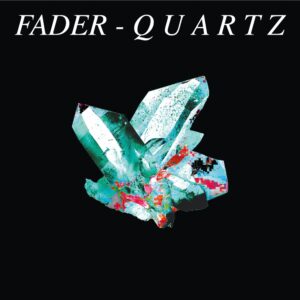 As with previous FADER works, Benge worked alone on the instrumentation at his Memetune Studios complex in Cornwall while Neil Arthur did his lyrics and vocals at his home studio. Their third album together ‘Quartz’ was an understated artistic statement inspired by incidental atmospheric music used in vintage TV shows. Minimalistic structures provided a reflective and elegiac backdrop. The icy waltz ‘Serpentine’ opened the album with its sparse keys like Gary Numan meeting Brian Eno and reminiscent of the former’s ‘Dance’ album from 1981.
As with previous FADER works, Benge worked alone on the instrumentation at his Memetune Studios complex in Cornwall while Neil Arthur did his lyrics and vocals at his home studio. Their third album together ‘Quartz’ was an understated artistic statement inspired by incidental atmospheric music used in vintage TV shows. Minimalistic structures provided a reflective and elegiac backdrop. The icy waltz ‘Serpentine’ opened the album with its sparse keys like Gary Numan meeting Brian Eno and reminiscent of the former’s ‘Dance’ album from 1981.
Available on the album ‘Quartz’ via Blanc Check Records
https://www.facebook.com/WeAreFader
THE GOLDEN FILTER Drive
 A reinterpretation of THE CARS’ mournful classic from 1984 which had already been a hit in its own right before becoming associated with Live Aid, this chilling version of ‘Drive’ by THE GOLDEN FILTER simply captured the zeitgeist in amongst the turmoil of world events… the work of Penelope Trappes and Stephen Hindman who released their first album ‘Volupsa’ in 2010, the duo defied people not to well up on hearing the words “Who’s gonna tell you when it’s too late? Who’s gonna tell you things aren’t so great?”.
A reinterpretation of THE CARS’ mournful classic from 1984 which had already been a hit in its own right before becoming associated with Live Aid, this chilling version of ‘Drive’ by THE GOLDEN FILTER simply captured the zeitgeist in amongst the turmoil of world events… the work of Penelope Trappes and Stephen Hindman who released their first album ‘Volupsa’ in 2010, the duo defied people not to well up on hearing the words “Who’s gonna tell you when it’s too late? Who’s gonna tell you things aren’t so great?”.
Available on the single ‘Drive’ via The Golden Filter
https://www.thegoldenfilter.com/
H/P Vicinities
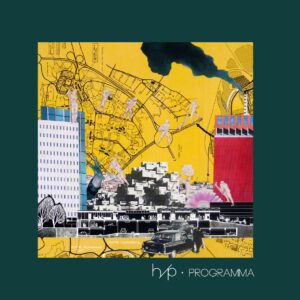 Based in Limoges, H/P were formally known as HAPPINESS PROJECT, issuing their first album ‘Remove Or Disable’ in 2008. For their H/P debut ‘Programma’, the trio not only shortened their moniker but also adopted a minimal synth approach. Acknowledging the debt of influence to cult French act MARTIN DUPONT, their bassist Alain Seghir guested on the glorious album closer ‘Vicinities’. Applying a complex spiral of delicate blips, it was enclosed is an emotional centre that recalls OMD for possibly the album’s stand-out song.
Based in Limoges, H/P were formally known as HAPPINESS PROJECT, issuing their first album ‘Remove Or Disable’ in 2008. For their H/P debut ‘Programma’, the trio not only shortened their moniker but also adopted a minimal synth approach. Acknowledging the debt of influence to cult French act MARTIN DUPONT, their bassist Alain Seghir guested on the glorious album closer ‘Vicinities’. Applying a complex spiral of delicate blips, it was enclosed is an emotional centre that recalls OMD for possibly the album’s stand-out song.
Available on the album ‘Programma’ via BOREDOMproduct
https://www.facebook.com/hp.programma
I SPEAK MACHINE War
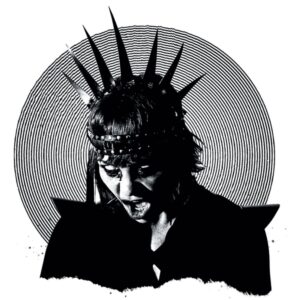 Adopting the dishevelled persona of a satanic Libertas, ‘War’ by I SPEAK MACHINE was another album that captured the zeitgeist, although the lyrics were much more personal to Tara Busch. Short and sweet with hints of Gary Numan’s ‘Metal’, the screeching title song opener set the scene and the album’s intentions with a rumbling backdrop. “It definitely has ‘Metal’ in there as an influence” she said, “It came about from me messing with my Casio SK1 and then running that through a Moogerfooger ClusterFlux to make it all bendy and provide actual notes from the feedback.”
Adopting the dishevelled persona of a satanic Libertas, ‘War’ by I SPEAK MACHINE was another album that captured the zeitgeist, although the lyrics were much more personal to Tara Busch. Short and sweet with hints of Gary Numan’s ‘Metal’, the screeching title song opener set the scene and the album’s intentions with a rumbling backdrop. “It definitely has ‘Metal’ in there as an influence” she said, “It came about from me messing with my Casio SK1 and then running that through a Moogerfooger ClusterFlux to make it all bendy and provide actual notes from the feedback.”
Available on the album ‘War’ via https://ispeakmachine.bandcamp.com/
KAREN HUNTER Don’t Call My Name
 Veteran singer Karen Hunter was a live band member on Gary Numan’s ‘Berserker’ and ‘The Fury’ tours and recorded a wonderful cover of the ballad ‘Don’t Call My Name’ in support of The Ced Sharpley Drumming Bursary. The original was the closing track on the 1988 album ‘Metal Rhythm’ and the haunting song is given a serene feminine twist. As well as being produced by music veteran Steve Hunter who played with Peter Gabriel and Lou Reed, Numan associates Chris Payne and Andy Coughlan also contributed.
Veteran singer Karen Hunter was a live band member on Gary Numan’s ‘Berserker’ and ‘The Fury’ tours and recorded a wonderful cover of the ballad ‘Don’t Call My Name’ in support of The Ced Sharpley Drumming Bursary. The original was the closing track on the 1988 album ‘Metal Rhythm’ and the haunting song is given a serene feminine twist. As well as being produced by music veteran Steve Hunter who played with Peter Gabriel and Lou Reed, Numan associates Chris Payne and Andy Coughlan also contributed.
Available as a digital single ‘Don’t Call My Name’ via Living Ornaments
https://karenhunter.hearnow.com/
KAVINSKY Outsider
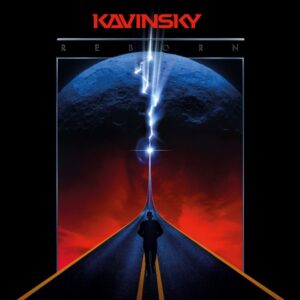 Vincent Belorgey aka Kavinsky made his name with ‘Night Call’ featuring vocals by Lovefoxxx of CSS. But after the track was featured in the cult movie ‘Drive’ in 2011, the Frenchman found it was becoming something of an albatross around his neck. He upset people when he said “f*ck that ‘synthwave’ stuff as u name it”. Seeming taking an age to record his follow-up to the ‘OutRun’ album, he made a statement to be ‘Reborn’. Channelling his inner Moroder circa ‘Midnight Express, ‘Outsider’ was a magnificent instrumental laced with orchestrated drama and tension.
Vincent Belorgey aka Kavinsky made his name with ‘Night Call’ featuring vocals by Lovefoxxx of CSS. But after the track was featured in the cult movie ‘Drive’ in 2011, the Frenchman found it was becoming something of an albatross around his neck. He upset people when he said “f*ck that ‘synthwave’ stuff as u name it”. Seeming taking an age to record his follow-up to the ‘OutRun’ album, he made a statement to be ‘Reborn’. Channelling his inner Moroder circa ‘Midnight Express, ‘Outsider’ was a magnificent instrumental laced with orchestrated drama and tension.
Available on the album ‘Reborn’ via Record Makers / Protovision
KID MOXIE Shine
 Compared with the previous works of KID MOXIE, there were darker and harder aesthetics at play on ‘Shine’ in collaboration with German EBM producer FADERHEAD. Taking both musical and lyrical inspiration from DEPECHE MODE’s ‘Never Let Me Down Again’, front woman Elena Charbila assertively declared “I’m taking the lead in the back seat”. “We definitely channelled some DM vibes” she remembered, “it was even a running joke while we were in studio recording it with FADERHEAD”.
Compared with the previous works of KID MOXIE, there were darker and harder aesthetics at play on ‘Shine’ in collaboration with German EBM producer FADERHEAD. Taking both musical and lyrical inspiration from DEPECHE MODE’s ‘Never Let Me Down Again’, front woman Elena Charbila assertively declared “I’m taking the lead in the back seat”. “We definitely channelled some DM vibes” she remembered, “it was even a running joke while we were in studio recording it with FADERHEAD”.
Available on the album ‘Better Than Electric’ via Pasadena Records
http://www.facebook.com/kidmoxie
KITE Panic Music
 As the wait for the ‘VII’ EP continues, “Sweden’s best kept pop-secret” returned with an interim single. ‘Panic Music’ exuded a fierce anxiety with front man Nicklas Stenemo presenting his characteristic screaming delivery. Over an epic neo-gothic backdrop now associated with KITE, Christian Berg continued his fascination for electronic drones and swoops while there was also the surprise of a guitar solo in the middle eight. The stress and strain of the past two years and a very uncertain future was effectively captured in song.
As the wait for the ‘VII’ EP continues, “Sweden’s best kept pop-secret” returned with an interim single. ‘Panic Music’ exuded a fierce anxiety with front man Nicklas Stenemo presenting his characteristic screaming delivery. Over an epic neo-gothic backdrop now associated with KITE, Christian Berg continued his fascination for electronic drones and swoops while there was also the surprise of a guitar solo in the middle eight. The stress and strain of the past two years and a very uncertain future was effectively captured in song.
Available on the digital single ‘Panic Music’ via Astronaut Recordings
https://www.facebook.com/KiteHQ
LEATHERS Runaway
 From Vancouver in British Columbia, ACTORS keyboardist Shannon Hemmett continued with her more synth focussed solo project LEATHERS. Not completely divorced from the main band family, frontman Jason Corbett acts as producer and collaborator, just as Daniel Hunt did with Helen Marnie on her solo work during the LADYTRON hiatus. ‘Runaway’ was gorgeous dreamy synthpop to elope to, “About breaking free and letting go, it provides a pop of color against the mundane routine of everyday life”.
From Vancouver in British Columbia, ACTORS keyboardist Shannon Hemmett continued with her more synth focussed solo project LEATHERS. Not completely divorced from the main band family, frontman Jason Corbett acts as producer and collaborator, just as Daniel Hunt did with Helen Marnie on her solo work during the LADYTRON hiatus. ‘Runaway’ was gorgeous dreamy synthpop to elope to, “About breaking free and letting go, it provides a pop of color against the mundane routine of everyday life”.
Available on the digital single ‘Runaway’ via Artoffact Records
https://www.facebook.com/leathersmusic
MECHA MAIKO Sunny, Softly (I Feel Love)
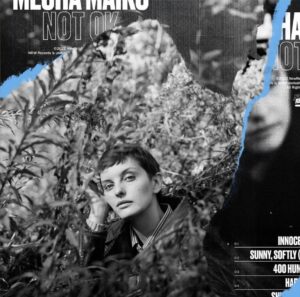 Hayley Stewart returned as MECHA MAIKO with ‘NOT OK’ to highlight the various social-political flashpoints that emerged during the pandemic. But focussing on warmer moments and feeling the force of some mighty electro, ‘Sunny, Softly (I Feel Love)’ threw in the iconic throb from the Giorgio Moroder produced Donna Summer hit for a glorious beat driven statement enhanced by an angelic delivery. “There’s a weightlessness to her song that I wanted to have play through the listener’s mind at the same time that they were listening to mine” she said.
Hayley Stewart returned as MECHA MAIKO with ‘NOT OK’ to highlight the various social-political flashpoints that emerged during the pandemic. But focussing on warmer moments and feeling the force of some mighty electro, ‘Sunny, Softly (I Feel Love)’ threw in the iconic throb from the Giorgio Moroder produced Donna Summer hit for a glorious beat driven statement enhanced by an angelic delivery. “There’s a weightlessness to her song that I wanted to have play through the listener’s mind at the same time that they were listening to mine” she said.
Available on the album ‘NOT OK’ via New Retro Wave
MINIMAL SCHLAGER Submission
 Sister and brother duo MINIMAL SCHLAGER began in 2020 as a consequence of the pandemic. Based between London and Berlin, Alicia Macanás and Francisco Parisi began to develop a brand of synth heavy dreampop. While bubbling with glistening synths, ‘Submission’ was a more of a new wave number with subtle guitar and a rhythmic bounce that set it apart from the other songs on their first album ‘Love, Sex & Dreams’ with an exhilarating chorus is that declares “For a second, I know I can win!”
Sister and brother duo MINIMAL SCHLAGER began in 2020 as a consequence of the pandemic. Based between London and Berlin, Alicia Macanás and Francisco Parisi began to develop a brand of synth heavy dreampop. While bubbling with glistening synths, ‘Submission’ was a more of a new wave number with subtle guitar and a rhythmic bounce that set it apart from the other songs on their first album ‘Love, Sex & Dreams’ with an exhilarating chorus is that declares “For a second, I know I can win!”
Available on the album ‘Love, Sex & Dreams’ via Duchess Box Records
https://www.facebook.com/minimalschlager
R.MISSING New Present City
 Fronted by enigmatic Sharon Shy, having released some fabulously ethereal singles in the shape of ‘Verónica Pass’, ‘Placelessness’, ‘Saturnining’ and ‘Crimeless’ in the past 18 months, New York-based darklings R. MISSING presented the sinister beauty of ‘New Present City’. In their embracement of the fragility of life with gently propelled soundscapes swathed in icy melancholia, this slice of electronic pop noir fittingly filled a gap left by the now disbanded CHROMATICS.
Fronted by enigmatic Sharon Shy, having released some fabulously ethereal singles in the shape of ‘Verónica Pass’, ‘Placelessness’, ‘Saturnining’ and ‘Crimeless’ in the past 18 months, New York-based darklings R. MISSING presented the sinister beauty of ‘New Present City’. In their embracement of the fragility of life with gently propelled soundscapes swathed in icy melancholia, this slice of electronic pop noir fittingly filled a gap left by the now disbanded CHROMATICS.
Available on the digital single ‘New Present City’ via Terminal Echo
RÖYKSOPP & ALISON GOLDFRAPP Impossible
 When RÖYKSOPP released their most recent long playing opus ‘The Inevitable End’ in 2014, it was said to be their final album and made a fine farewell. But after various singles, archive releases and soundtrack commissions, they returned with the ‘Profound Mysteries’ trilogy. Featuring Alison Goldfrapp, the delicious ‘Impossible’ was a mighty avant disco excursion that was both seductive and functional. With the uplifting high soprano middle eight drifting into an intergalactic twist, it could be rightly considered one of the songs of 2022.
When RÖYKSOPP released their most recent long playing opus ‘The Inevitable End’ in 2014, it was said to be their final album and made a fine farewell. But after various singles, archive releases and soundtrack commissions, they returned with the ‘Profound Mysteries’ trilogy. Featuring Alison Goldfrapp, the delicious ‘Impossible’ was a mighty avant disco excursion that was both seductive and functional. With the uplifting high soprano middle eight drifting into an intergalactic twist, it could be rightly considered one of the songs of 2022.
Available on the album ‘Profound Mysteries’ via Dog Triumph
HANNA RUA Light In Your Dark
 Swedish songstress Hanna Rua has a dreamy electronic pop sensibility with the emphasis on the pop, but her debut EP ‘Light Up Your Dark’ also demonstrated her scope and capability using darker aesthetics. With a wonderfully gritty austere, the title song played with gothier influences while remaining melodic, coming over like a Nordic NINA in her more recent work. A battle against the demons, the brooding presence recalled unga moderna veterans LUSTANS LAKEJER and their 1999 single ‘Cynisk’.
Swedish songstress Hanna Rua has a dreamy electronic pop sensibility with the emphasis on the pop, but her debut EP ‘Light Up Your Dark’ also demonstrated her scope and capability using darker aesthetics. With a wonderfully gritty austere, the title song played with gothier influences while remaining melodic, coming over like a Nordic NINA in her more recent work. A battle against the demons, the brooding presence recalled unga moderna veterans LUSTANS LAKEJER and their 1999 single ‘Cynisk’.
Available on the EP ‘Light Up Your Dark’ via Aztec Records
SALLY SHAPIRO Fading Away
Although they announced a retirement of sorts in 2016, Swedish duo SALLY SHAPIRO joined the Italian Do It Better family in 2021 to make an unexpected return. ‘Fading Away’ was an epic dance tune to close the ‘Sad Cities’ comeback album. Perhaps unexpectedly originating from an ambient improvisation session, this atmospheric template was merged with a relentless disco synthwave hybrid, utilising a glorious plethora of trancey electronics and thumping rhythms across its seven minutes.
Available on the album ‘Sad Cities’ via Italians Do It Better
https://www.facebook.com/shapirosally
SIN COS TAN Endless
 With the bear next door, the title of SIN COS TAN’s fourth album ‘Living In Fear’ resonated with anyone resident in Finland or anywhere in the civilised world; “Do you fear the dark, love, war, or yourself? Whatever the answer, you can be certain: Fear is a powerful thing.” The windswept electro-motorik of ‘Endless’ used the melodic synthy highs of OMD to counter the melancholic expression and drone laden backdrop, acting as a burst of escapist optimism despite surrounding tensions.
With the bear next door, the title of SIN COS TAN’s fourth album ‘Living In Fear’ resonated with anyone resident in Finland or anywhere in the civilised world; “Do you fear the dark, love, war, or yourself? Whatever the answer, you can be certain: Fear is a powerful thing.” The windswept electro-motorik of ‘Endless’ used the melodic synthy highs of OMD to counter the melancholic expression and drone laden backdrop, acting as a burst of escapist optimism despite surrounding tensions.
Available on the album ‘Living In Fear’ via Solina Records
http://solinarecords.com/sincostan/
SOFT CELL Nighthawks
 Originally a Dave Ball instrumental issued as a single that came with the boxed set of his autobiography ‘Electronic Boy’, the tense industrialised pulse of ‘Nighthawks’ recalled the sweaty alternative club overtures of one-time Some Bizzare stable mates CABARET VOLTAIRE. Featuring a deranged expletive laden rap from American drag performance artist Christeene, SOFT CELL fans were even treated to the deep growly voice of Mr Ball himself repeating the title alongside Marc Almond while ‘Staying Alive’ backing vocals provided another counterpoint.
Originally a Dave Ball instrumental issued as a single that came with the boxed set of his autobiography ‘Electronic Boy’, the tense industrialised pulse of ‘Nighthawks’ recalled the sweaty alternative club overtures of one-time Some Bizzare stable mates CABARET VOLTAIRE. Featuring a deranged expletive laden rap from American drag performance artist Christeene, SOFT CELL fans were even treated to the deep growly voice of Mr Ball himself repeating the title alongside Marc Almond while ‘Staying Alive’ backing vocals provided another counterpoint.
Available on the album ‘*Happiness Not Included’ via BMG
UNIFY SEPARATE Closure
 Documenting a period of personal struggle, the new UNIFY SEPARATE album ‘Music Since Tomorrow’ attempted ‘Closure’ and this epic album opener set the scene with a building atmospheric trance tune that simply mesmerised, especially when front man Andrew Montgomery hit his trademark falsetto. Instrumentalist Leo Josefsson cited influences such as MODERAT, FLOATING POINTS, NITZER EBB, UNDERWORLD and FRONT 242 for the sound while there was also inspiration from the movie ’28 Days Later’.
Documenting a period of personal struggle, the new UNIFY SEPARATE album ‘Music Since Tomorrow’ attempted ‘Closure’ and this epic album opener set the scene with a building atmospheric trance tune that simply mesmerised, especially when front man Andrew Montgomery hit his trademark falsetto. Instrumentalist Leo Josefsson cited influences such as MODERAT, FLOATING POINTS, NITZER EBB, UNDERWORLD and FRONT 242 for the sound while there was also inspiration from the movie ’28 Days Later’.
Available on the album ‘Music Since Tomorrow’ via How Music Group
BELLA UNWIN Cold Breeze
 Bella Unwin has been releasing music since 2018 but this year saw an artistic leap. With shades of Alison Goldfrapp, Hannah Peel and the often forgotten Stella Grundy, the positively feline and angelic ‘Cold Breeze’ was the London-based Aussie’s best song yet. With subtle rhythmic lattices and chattering synthesizer goodness, the additional production and mix by Finlay Shakespeare boosted the punchy and immediate machine funk that was laced with wispy and alluringly coy vocals.
Bella Unwin has been releasing music since 2018 but this year saw an artistic leap. With shades of Alison Goldfrapp, Hannah Peel and the often forgotten Stella Grundy, the positively feline and angelic ‘Cold Breeze’ was the London-based Aussie’s best song yet. With subtle rhythmic lattices and chattering synthesizer goodness, the additional production and mix by Finlay Shakespeare boosted the punchy and immediate machine funk that was laced with wispy and alluringly coy vocals.
Available on the single ‘Cold Breeze’ via GOTO Records
https://www.facebook.com/bellaunwinmusic
THE WEEKND Less Than Zero
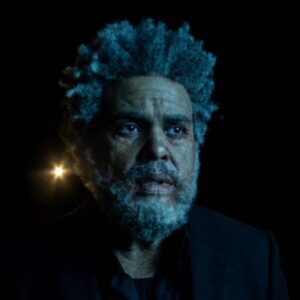 After ‘Blinding Lights’ and ‘Save Your Tears’, THE WEEKND again reminded the mainstream of the emotive beauty that can come from classic synthpop with ‘Less Than Zero’. ‘Less Than Zero’ itself sounded not unlike Michael Jackson produced by Tony Mansfield. The cross of catchy hooks, glorious counter-melodies and acoustic strums were reminiscent of Mansfield’s own combo NEW MUSIK who had UK hits with ‘Living By Numbers’, ‘This World Of Water’ and ‘Sanctuary’ in 1980; Tony Mansfield himself later went on to produce most of A-HA’s debut album ‘Hunting High & Low’.
After ‘Blinding Lights’ and ‘Save Your Tears’, THE WEEKND again reminded the mainstream of the emotive beauty that can come from classic synthpop with ‘Less Than Zero’. ‘Less Than Zero’ itself sounded not unlike Michael Jackson produced by Tony Mansfield. The cross of catchy hooks, glorious counter-melodies and acoustic strums were reminiscent of Mansfield’s own combo NEW MUSIK who had UK hits with ‘Living By Numbers’, ‘This World Of Water’ and ‘Sanctuary’ in 1980; Tony Mansfield himself later went on to produce most of A-HA’s debut album ‘Hunting High & Low’.
Available on the album ‘Dawn FM’ via by XO / Republic Records
xPROPAGANDA The Wolves Are Returning
 One of the best numbers on the Stephen J Lipson produced ‘The Heart Is Strange’, a stark warning on rise again of the far right was highlighted on ‘The Wolves Are Returning’. Despite its bounce and sonic interventions, the message coming from two Germans whose grandparents’ generation had made the mistake of opening up the door to the Nazis and “did nothing” was poignant. Claudia Brücken and Susanne Freytag provided a worthy follow-up to ‘A Secret Wish’ as xPROPAGANDA.
One of the best numbers on the Stephen J Lipson produced ‘The Heart Is Strange’, a stark warning on rise again of the far right was highlighted on ‘The Wolves Are Returning’. Despite its bounce and sonic interventions, the message coming from two Germans whose grandparents’ generation had made the mistake of opening up the door to the Nazis and “did nothing” was poignant. Claudia Brücken and Susanne Freytag provided a worthy follow-up to ‘A Secret Wish’ as xPROPAGANDA.
Available on the album ‘The Heart is Strange’ via ZTT Records
https://www.xpropaganda.co.uk/
A selection of ELECTRICITYCLUB.CO.UK’s favourite music of 2022 is featured in its ‘Stay Negative To Be Positive’ playlist at https://open.spotify.com/playlist/4Mw0Fn10yNZQcrGzod98MM
Text by Chi Ming Lai
12th December 2022


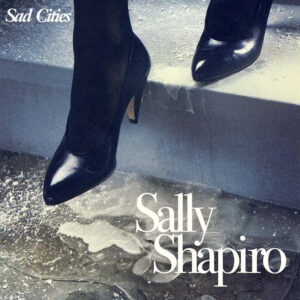











Follow Us!